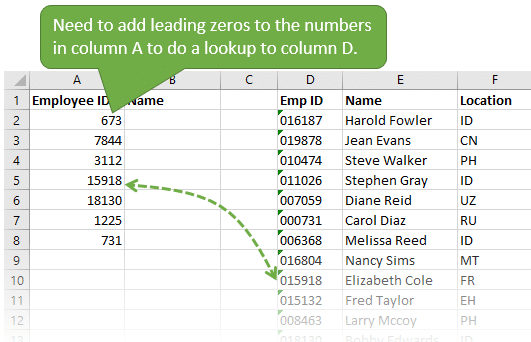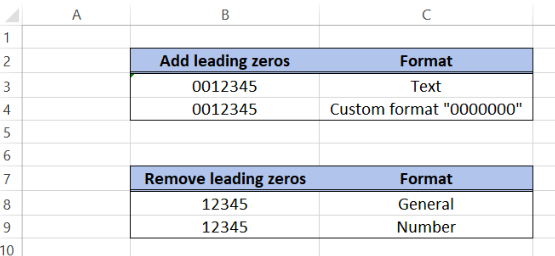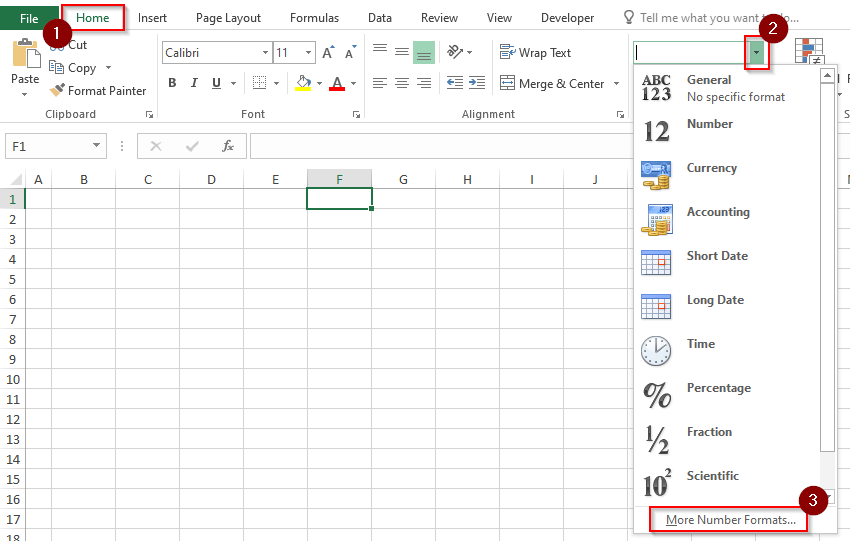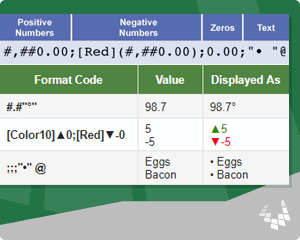
a preceding time frame is almost always a value-add. Whether we’re looking at month-over-month, year-over-year or even custom time frames compared vs. Using Special Characters to Your Advantageįor a lot of Tableau users, comparison metrics are a very common business ask.
Custom formatting excel nonzero numbers series#
For the first part of this series on Tricks of the Trade, let’s take a look at how custom number formatting and special characters can be manipulated separately or together to do a whole lot more than initially meets the eye.

What I heard back was not a list of incredibly sophisticated technical maneuvers or very involved calculations, but instead a variety of small things that add up to make a big difference. At InterWorks, we work with clients in industries of all shapes and sizes, so I asked around amongst our many consultants for the tips they use most in their day-to-day work. Sometimes, little tricks can save you a lot of time. 1, 45) ss = two digit representation (e.g.Our team of experts share their most reliable and time-saving formatting tips and tricks to enhance dashboarding work in Tableau in this blog series. Second s = one or two digit representation (e.g. 1, 55) mm = two digit representation (e.g. Minute (when used as a part of a time) m = one or two digit representation (e.g. 1, 20) hh = two digit representation (e.g.

Hour h = one or two digit representation (e.g. 99, 08) yyyy = 4-digit representation of year(e.g. Year yy = 2-digit representation of year(e.g.
Custom formatting excel nonzero numbers full#
Jan, Dec) mmmm = full name of month (e.g. 01, 12) mmm = abbreviated month name (e.g. 1, 12) mm = two digit representation (e.g. Month (when used as part of a date) m = one or two digit representation (e.g. Mon, Tue) dddd = full name of day of week (e.g. 01, 12) ddd = abbreviated day of week (e.g. When formatting a cell as a date, time or date and time, use the following characters: dĭay of the month or day of week d = one or two digit representation (e.g. The following examples show the effect of different Excel formatting definitions on the numbers 5198.34, -98.66667 and 0 Formatting Definition: If three text formats are supplied (separated by semi-colons), the first format is applied to positive numbers, the second format is applied to negative numbers and the third format is applied to the value zero.If two text formats are supplied (separated by a semi-colon), the first format is applied to positive numbers (and the value zero) and the second format is applied to negative numbers.If just one text format is supplied, this format is applied to all numbers.If the cell contains a numeric value, these formats are applied depending on whether the number is positive, negative or zero, as follows:

You can define one, two or three basic Excel formats for any one cell. replacing a zero value with the text "NIL") You can even replace a number completely with your chosen characters (e.g. Other characters, such as the ",", "$", "£", "+", "-", "(" and ")" can be displayed at the start, middle and/or end of numbers, to make the number more readable, denote currency, or to denote positive or negative values, etc.

The name of a colour can be inserted between square brackets to define the font colour When defining an excel custom number format for an integer, a decimal or a currency, the following characters are used: 0įorces the display of a digit in its placeĭisplay digit if it adds to the accuracy of the number (but don't display if a leading zero or a zero at the end of a decimal) Custom Integer, Decimal & Currency Formatting


 0 kommentar(er)
0 kommentar(er)
